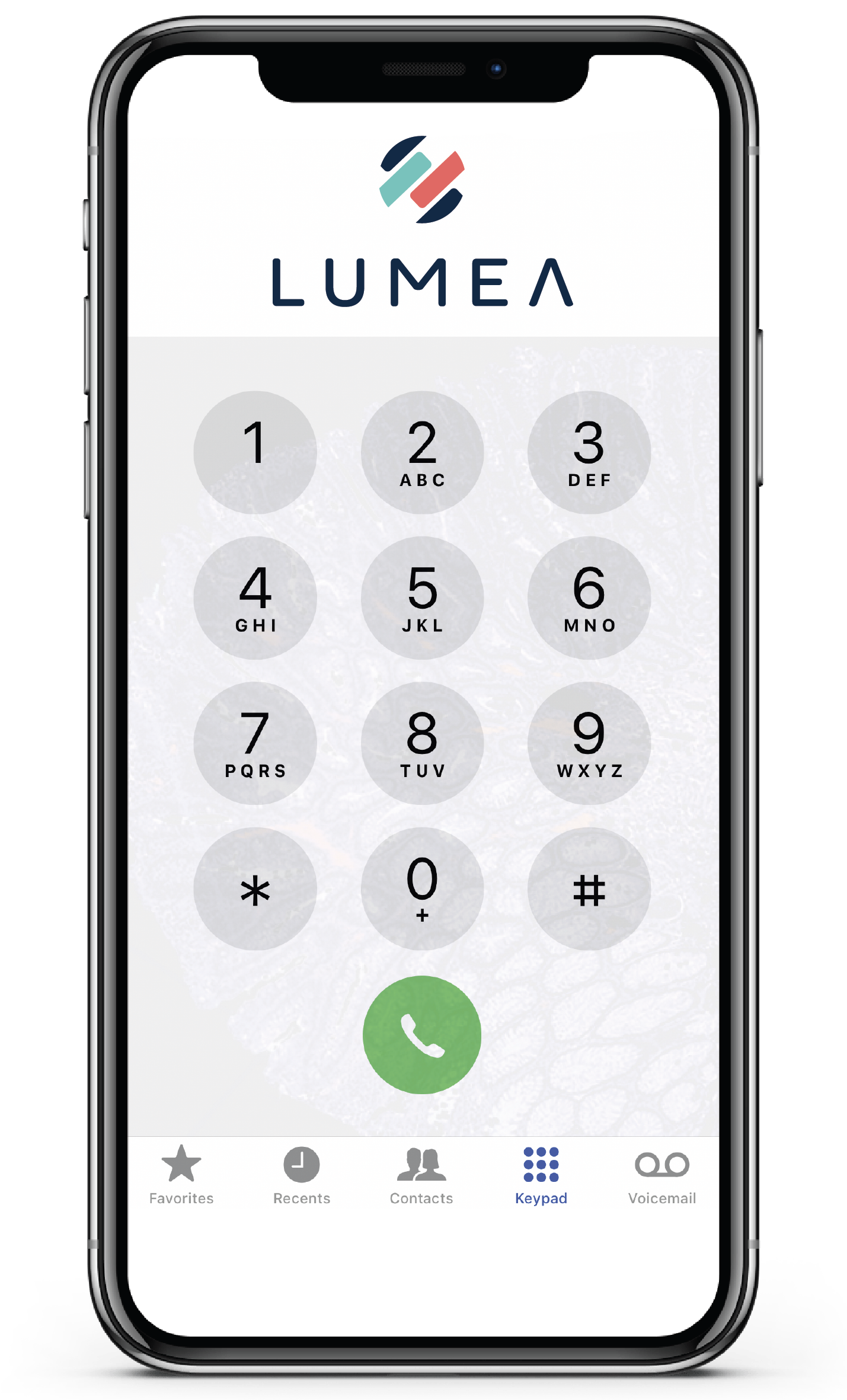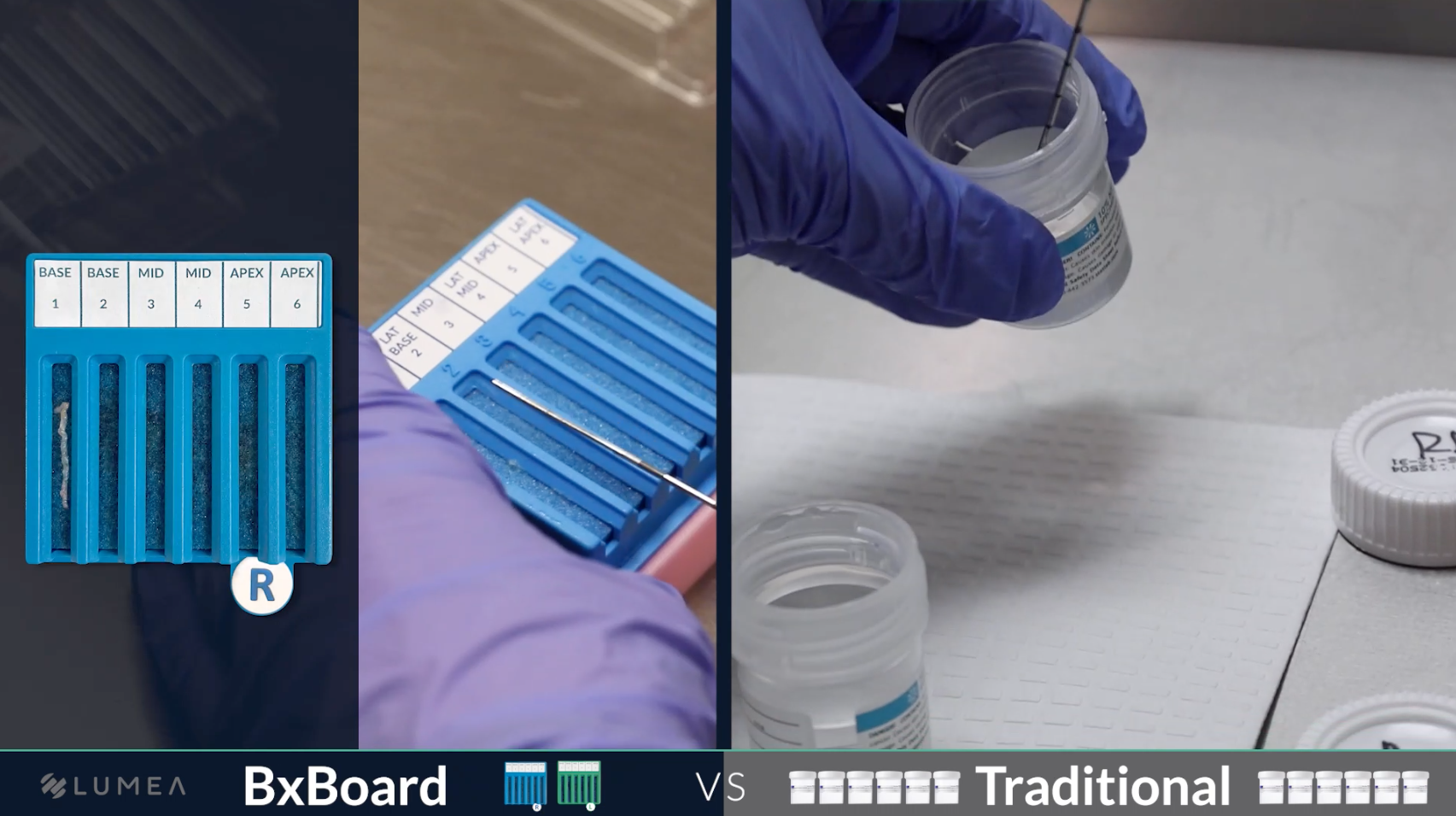FAQ
What are BxBoards?
BxBoards are an efficient, formalin-sparing replacement for formalin bottles that actually improve the integrity of tissues while allowing for unprecedented maintenance of tissue orientation. Core biopsies lay in site-specific lanes on top of a formalin-soaked sponge, significantly reducing the number of containers and labels. The board has a clear plastic lid that ensures formalin preservation and allows for visibility.
What specimen types can the BxBoard hold?
Lumea sells a 6-core BxBoard, ideal for small core needle biopsies like prostate. It holds 18-20 gauge tissue cores. A typical 12-core prostate sampling would require two 6-lane BxBoards, instead of 12 jars/labels.
Our team is working on a 4-core BxBoard optimized for larger gauge breast core biopsies. The goal is to create better alternatives to bottles for as many specimen types as possible.
How does the BxBoard work with other Lumea technology?
The BxBoard can be used separately or in tandem with the Lumea Smart Tissue Camera and BxChips™.
A surgery center or other procedure facility can choose to use a Smart Tissue Camera to take an image of the BxBoard without having to remove the board’s lid as an additional chain-of-custody step. BxBoards are also configured with RFID as an additional safety measure.
The BxChip is an engineered tissue-mimetic array that safely holds up to 6 core needle biopsies in a single cassette throughout tissue processing. It processes and cuts on the microtome just like tissue.
What are the benefits of BxBoards?
Patient Care and Efficiency Benefits
Surgeons can easily see biopsies on the blue sponge, enabling them to validate the quality of the core right away.
BxBoards maintain tissue orientation, and labs can maintain this orientation through the histological preparation process with the use of the BxChip. Reports can then display the actual distribution of cancer along the length of the core, distinguishing the capsule from deep tissue and helping guide treatment decisions.
Curling and fragmentation of tissue cores are dramatically reduced, since they are maintained flat and relatively straight in their narrow lanes, rather than free-floating in formalin jars.
Health and Safety Benefits
When using a BxBoard, biopsy needles are wiped across a sponge rather than submerged in formalin, which may result in less of the chemical being introduced into the patient during multiple-biopsy procedures.
Formalin doesn’t need to be dumped down a drain or filtered off during grossing, reducing chemical exposure and spills. BxBoards contain only 33 to 47% of the formalin contained in small specimen bottles.
Goodbye bottles for small biopsies, hello Lumea BxBoard! Medical personnel place tissue samples on special hydrophilic formalin-soaked sponges within the BxBoards. This tech preserves anatomic orientation, allowing for more specific localization of the disease.
BxBoards are also healthier for MAs, physicians, and lab personnel because they reduce the amount of formaldehyde exposure.
Clinics and surgery centers using the BxBoard report an 83% reduction in containers and a 92.5% reduction in formalin per prostate case.
BxBoard in the Clinic
Instructions:
STEP 1 – Preparing Kit Items for Prostate Biopsy:
Wear gloves.
1. Remove BxBoards from Mylar bags (do not discard).
2. Remove BxBoards from clear containers (do not discard).
3. Write the patient’s name and DOB on the back of each BxBoard.
4. Remove the clear cover right before the biopsy to retain moisture.
STEP 2 – Outliers/Extra Cores (if applicable):
2. Place up to one outlier/extra core into each lane.
3. Immediately write the site initials in the space provided above the lane (i.e. RB, LLA, etc.).
4. Replace the clear cover.
STEP 3 – Loading Tissue:
2. Once all cores are loaded, replace the clear cover.
STEP 4 – Mailing Instructions:
2. Seal BxBoards back into their clear containers and mylar bags.
3. Place all BxBoards into the collection kit.
4. Include patient demographic/insurance information.
5. Place the kit into the provided shipping mailer.
BxBoard in the Lab
Instructions:
Note that the lanes are individual sites as listed on the requisition. In other words, lane “1” on the far left is a single core site (unless otherwise noted).
- To routinely cassette the tissue, remove from the lane
- Measure and transcribe the tissue
- Wrap in filter paper
- Place in the corresponding cassette
If you have any questions about the BxBoard, feel free to reach out to Lumea at 844-960-3658.
Benefits of BxBoard Use vs. Specimen Containers With (liquid) 10% NBF
Absorption Fixation
The BxBoard contains a hydrophilic sponge saturated in 3 mL of 10% NBF. This saturated sponge facilitates an even-paced, active, combined diffusion and capillary exchange of 10% NBF between the sponge and the tissue on the surface.
The airtight enclosure provides an environment that allows for the formalin gas to assist in the even fixation of the specimen.
The BxBoard is an ideal environment for efficient and effective fixation that takes less time and maintains the integrity of the nucleic acids and proteins. Based on a validation by Myriad Genetics and PathNet, Boards show a 4% cancellation vs the routine specimen bottle with a 13% cancellation.
Clear View Lid
The BxBoard lid is form-fitted to the lanes in the BxBoard to maintain the site designations.
The lid is transparent, enabling clinical staff and laboratory personnel access to clear specimen identification without the need to remove the lid for a chain of custody verification.
The outer casing (or clam shell) is also transparent to maintain the specimen visibility, is an airtight closure, and acts as a secondary containment for the 10% NBF.
Designation of Specimen Sites
The site identification is indicated at the top of each lane via a label, which should match the specimen requisition forms.
The BxBoards are available in color-coded shells to reduce L or R labeling errors and tissue type errors.
• Our GREEN BxBoards are typically used for 18-gauge prostate cores from the LEFT side of a prostate
• Our BLUE BxBoards are typically used for 18-gauge prostate cores from the RIGHT side of a prostate.
• Our BLACK BxBoards are typically used for 18-gauge cores from outlying prostate sites or 18-gauge core biopsies from other organs.
• Our PINK BxBoards are typically used for 14-gauge cores from BREAST biopsies.
• The application of the BxChip in the lab will maintain this designation throughout the processing with no need to ink the deepest tip or uneven, stair-stepped blocks. *Ask or follow the link to BxChip information.
Maintaining the Designation & Sequence of the Tissue
Cores are typically placed by the natural mechanics of the biopsy guns at the time of the procedure from the deepest aspect of the core to the superficial aspect from the back to the front and from the left to the right of the BxBoard.
Any cores that fragment or are likely to fall apart are laid on the board as they come free from the biopsy gun maintaining the sequence as it respectively relates to the organ of biopsy.
Environmental Impact
Reduction in the number of specimen containers.
• The 6-lane BxBoard can reduce the number of site-related containers by 6:1.
• The 4-lane BxBoard can reduce the number of site-related containers by 4:1.
Reduction in the probability of a 10% NBF spill or contamination/exposure.
• The sponges in the BxBoards hold between 3.3 and 3.7 mL of 10% NBF. The smallest biopsy specimen bottle holds 10 mL of 10% NBF.
• The use of absorbed liquids vs. free-moving liquids keeps the formalin in the right place for transport.
• The BxBoard is not likely to be a spill hazard.
Reduction in the 10% NBF exposure to patients, clinicians and staff, transportation, as well as in the Histology laboratory.
• No need to swish the needle in the bottle or secondarily contact the tissue to place it in the BxBoard.
• No risk of mis-threading a lid since the BxBoard has a snap-on lid.

“A pathologist’s biggest fear is missing something. Now, they’re able to economically see all of the cores dual-stained and have more confidence they are giving the correct diagnosis”
James Dixon, Pathology Lab ManagerHorizon Montcon Pathology Lab








